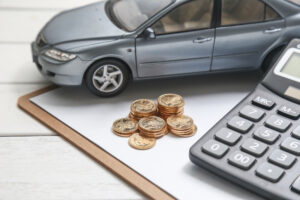With interest rates currently at a record low, one might assume that vehicle owners today would have more money in their pockets.
With interest rates currently at a record low, one might assume that vehicle owners today would have more money in their pockets. However, these savings have been largely negated with the financial strain placed on many consumers due to the country’s various lockdown levels since the COVID-19 virus broke in March 2020. This includes managing the actual costs of vehicle ownership within the total monthly household budget.
Even if a car is being driven less frequently, fixed monthly payments, remain and need to be included in the monthly household budget,
– Lebogang Gaoaketse, WesBank Motor Head of Marketing and Communication.
The impact of the global pandemic has resulted in a growing trend to work remotely, with many people still either electing to or being required to work from home. One of the outcomes of this new blended working arrangement is a reduced usage from consumers who own cars. As a result of this, it is likely that the annual kilometres driven will have reduced considerably over the past year.
“While the current low interest rates and savings on general vehicle maintenance and fuel consumption is positive news for car owners servicing a vehicle finance loan, it is important to understand the total monthly costs of vehicle ownership. Even if a car is being driven less frequently, fixed monthly payments, such as the vehicle finance repayment terms and insurance costs, remain and need to be included in the monthly household budget,”says Lebogang Gaoaketse, WesBank Motor Head of Marketing and Communication.
Looking at an average entry-level vehicle that travels approximately 2,500 kilometres per month, the monthly cost of the vehicle ownership basket, comprising of instalments, fuel, insurance and maintenance fees, has decreased to R7,584 in 2020 from R 7,851 in 2019, as a result of the lower interest rates and fuel consumption. While this reflects a percentage decrease of 3.41% year on year, the 2020 average figure is 15.5% higher than five years ago, when the monthly cost averaged R6,564 in 2016.
It is important to remember that this monthly vehicle ownership basket figure is based on data that constantly shifts…
– Lebogang Gaoaketse, WesBank Motor Head of Marketing and Communication.
These costs are reflected in the WesBank Mobility Calculator, a tool that tracks and calculates motoring expenses. The total basket of costs comprises all the fees associated with vehicle ownership: the monthly instalment, comprehensive insurance premium, fuel and maintenance fees. These expenses are updated regularly to reflect current inflation and interest rates, and other fluctuating costs.
“It is important to remember that this monthly vehicle ownership basket figure is based on data that constantly shifts in relation to market activity and is thus intended as a guideline only. The economic impact of COVID-19 last year will have created an anomaly in relation to the 2019 data, so this should also be taken into consideration when looking at the total figure for 2020,”notes Gaoaketse.
The bad news however is that vehicle prices continue to rise, with the TransUnion SA Vehicle Pricing Index (VPI) for Q4 2020 indicating an increase in the costs of both new and used vehicles. The VPI for new vehicles rose to 9.6% in Q4 2020, from 2.9% in the same period in 2019, with the used vehicle price rising to 2.9% from 1.2% in Q4 2019. With the CPI sitting at 3.3% for Q4 2020, new vehicle price increases remain above inflation, and are forecast to increase further in the coming months, according to the latest TransUnion SA VPI data.

“As a result of the vehicle price inflation over the past year, consumers have spent more on average for new and used vehicles in 2020, and this trend is likely to continue into 2021. In January this year, the average value of a new vehicle financed through WesBank was R358,390 compared to January 2020 when the figure stood at R327,723. This reflects a 9.4% year on year average price increase for new vehicles,” says Gaoaketse.
With vehicles being driven less since the first lockdown period in March last year, the average fuel spend is down 6%
During 2020, vehicle instalments and fuel spend remained the largest portions of the basket, accounting for 79% of the monthly spend. Fuel spend accounted for 34% of the total, with the vehicle instalment amount sitting at 45%. The figures for 2020 show monthly fuel spend averaged R2,566, with the instalment rate significantly higher at R3,433. The monthly insurance cost was R1,235 or 16% of the cost, with running costs per month accounting for 5% at R350.
This differs with the mobility basket in 2016, where fuel spend and vehicle instalment costs were more comparable – the average monthly fuel spend was R2,287, slightly lower than an entry-level vehicle’s net instalment of R2,976. The 2020 figures show that this is no longer the case.
“With vehicles being driven less since the first lockdown period in March last year, the average fuel spend is down 6% from R2,732 in 2019. However, this does not mean the overall cost of motoring is lower and, while interest rate cuts are always welcome, this alone shouldn’t influence a vehicle purchase.
Motorists should take a holistic view when planning a car purchase and ensure that their monthly budget can cover the instalment amount, insurance costs, fuel spend and savings for maintenance and services. The budget should also make allowances for increased costs down the line, such as a higher interest rate or a fuel price increase.






